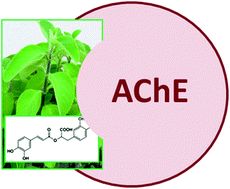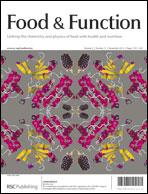Interaction between Plectranthus barbatus herbal tea components and acetylcholinesterase: binding and activity studies
Abstract
Plectranthus barbatus water extracts, have been used as herbal teas, for the treatment of various diseases. In a previous study it was demonstrated that antioxidant and anti-acetylcholinesterase active extract constituents and their metabolites were found in the plasma of rats after P. barbatus tea intraperitoneal administration. Consequently, a decrease in brain acetylcholinesterase activity occurred. The aim of the present research is to elucidate how P. barbatus extract components interact with acetylcholinesterase. The estimated thermodynamic parameters suggest that the main intermolecular interaction is hydrophobic association, although hydrogen bonds between flavonoids and the active gorge of the acetylcholinesterase molecule seem to occur and have a great impact on acetylcholinesterase inhibition. The hydroxyl positions in flavonoids seem to be of utmost importance for enzyme inhibition, as they interact with specific amino acid residues in the active gorge. FTIR analysis showed that the plant extract components do not interfere with the secondary structure of the enzyme, but decreases the rate of hydrogen–deuterium exchange, possibly by decreasing solvent accessibility in the acetylcholinesterase active gorge. The spectroscopic data complements docking studies of acetylcholinesterase inhibition by plant phenolic compounds, clarifying the dominant interactions between enzyme and inhibitor and the most important structural features of the inhibitor molecules.


 Please wait while we load your content...
Please wait while we load your content...